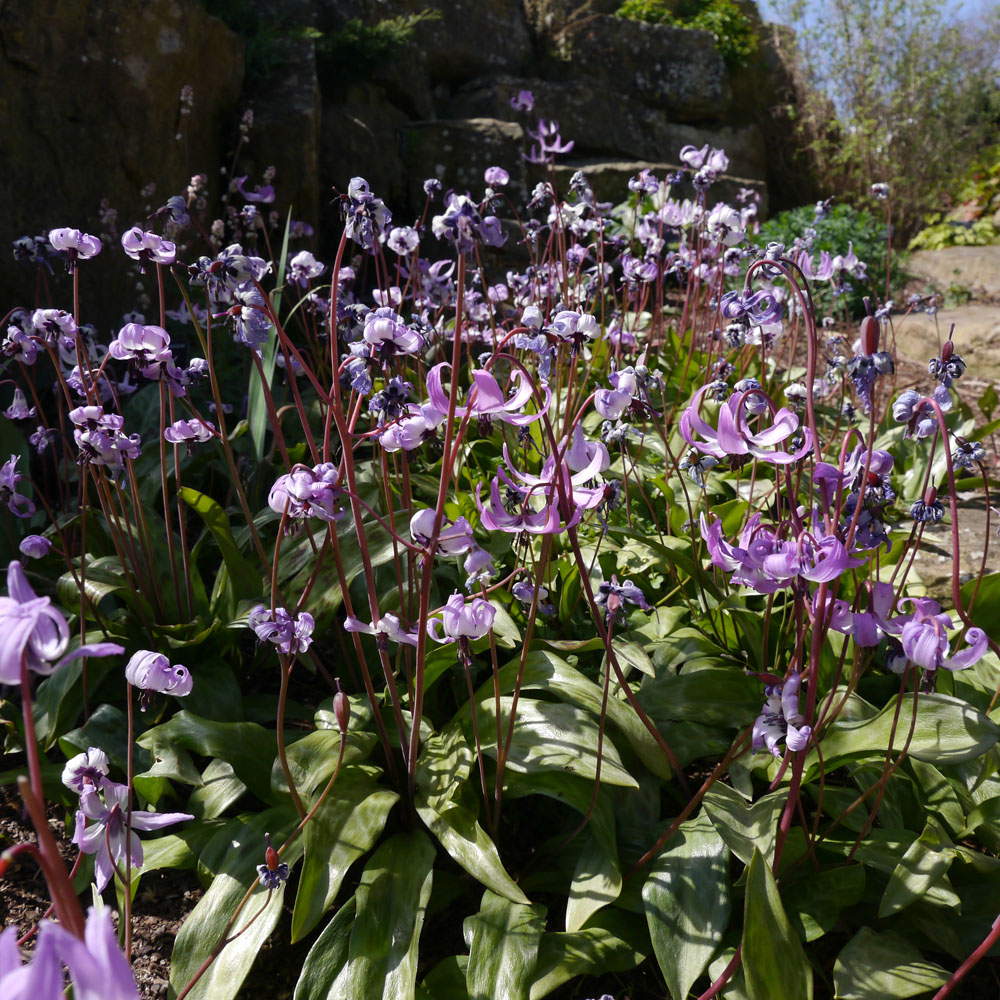Description
Erythronium – Dog’s-tooth Violet – Trout Lily – Fawn Lily –
There are about 22 species of clump forming perennials, with long pointed, toothed like bulbs, in this genus. They occur in habitats ranging from deciduous woodland to open mountain meadows in Eurasia and North America. From spring to early summer, slender, upright stems carry delicate 1-10 pendent star shaped flowers, usually 1 1/4-2 ½” across, in shades of purple, violet, pink, yellow, or white, each with conspicuous stamens and 6 pointed, recurved tepals. They produces broadly elliptic to ovate-elliptic, paired usually semi erect, basal leaves, 1 1/4-14″ long, are glossy to glaucous, mid to dark green, in some species heavily marbled bronze. Grow in clump under deciduous tree and shrubs, or in a rock garde, or naturalized in then grass.
Plant bulbs at least 4″ deep in autumn, in fertile,, humus rich, well drained soil that does not dry out, in light, dappled or partial shade. Divide establish clumps after flowering.
Prone to rust, smuts, slugs, and fungal spots.
E. hendersonii – Henderson’s Fawn Lily – This bulbous perennial from Southwestern Oregon and Northwestern California grows 6-12″ tall and 3″ wide. It produces elliptic, wavy edged, lightly brown-banded, dark green leaves, 4-8″ long. In spring, each stem bears up to 10 lavender or lavender pink flowers, 2″ across, with purple anthers and deep purple, sometimes yellow central eye. Best in light shade with a dry summer.
Zones 3-9





